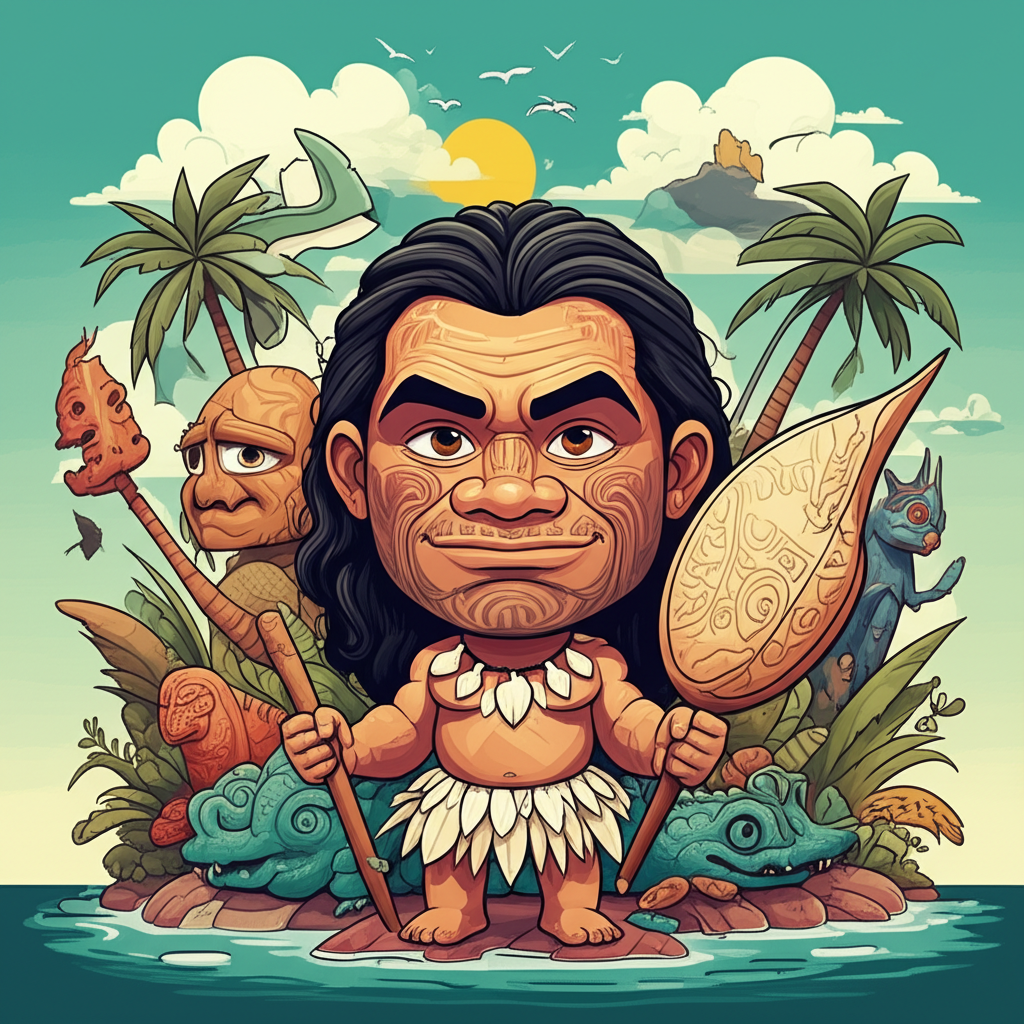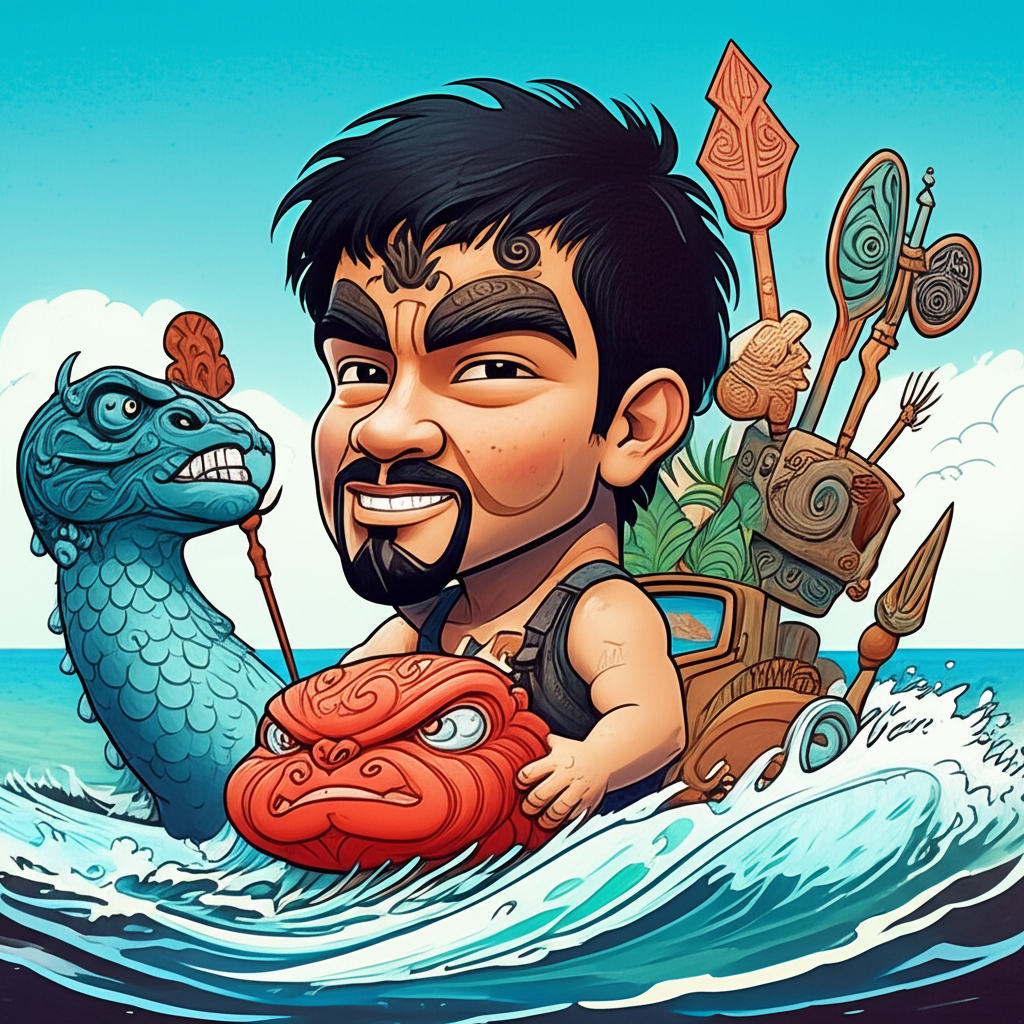
The world, as understood by the ancient peoples of Polynesia, was a place alive with spirits, where the actions of gods and mythical beings shaped the very fabric of existence. From the volcanic heart of Hawai’i to the windswept coasts of Aotearoa (New Zealand), these narratives were not mere bedtime tales, but profound explanations for the natural world, the human condition, and the intricate relationships between all living things. Among these ancient stories, echoes of the demigod Maui, the shape-shifting trickster, and the serpentine Mo’o, guardians of water and land, weave through the oral traditions that connect these island cultures across the vast Pacific.
Origins and Cultural Background: A World Imbued with Mana
These myths emerged from a time when life was intrinsically tied to the rhythms of nature. Societies were often coastal, reliant on the bounty of the ocean and the fertility of the land. The worldview was animistic, attributing spirit and consciousness to everything – rocks, rivers, trees, and the celestial bodies. This concept of mana, a supernatural force or spiritual power, permeated every aspect of life, residing in individuals, objects, and places, and could be gained or lost through actions and lineage.
In this context, the natural world was not a passive backdrop but an active participant in the grand cosmic drama. Earthquakes, volcanic eruptions, the changing tides, the very formation of islands – all were attributed to the deeds of powerful, often anthropomorphic beings. The stories served as a living library, passing down knowledge about geography, navigation, social customs, and the moral compass that guided their communities. These were the foundational narratives, etched not in stone or parchment, but in the collective memory of generations, sung in chants and performed in dances.
The Figure of Maui: A Catalyst of Change
Central to many Polynesian myths is the figure of Maui. Often depicted as a demigod, a mischievous but ultimately benevolent trickster, Maui’s exploits are legendary. He is the one who fished up islands from the ocean depths, who slowed down the sun to lengthen the day, and who sought to steal fire for humanity. His attributes are those of resourcefulness, cunning, and a boundless curiosity that often led him to challenge the established order. He embodies the spirit of innovation and the persistent human drive to overcome limitations, whether natural or societal. While his actions were often bold and sometimes reckless, they ultimately served to improve the lives of mortals.
The Mo’o: Guardians of the Waters and the Land
Intertwined with these grand narratives are the tales of the Mo’o. These are serpentine beings, often depicted as large lizards or dragons, deeply connected to water – rivers, lakes, springs, and the ocean. The Mo’o are frequently portrayed as guardians, their presence signifying the life-giving and sometimes destructive power of water. They could be benevolent protectors, ensuring the abundance of aquatic resources, or fearsome entities, capable of unleashing floods or demanding appeasement. Their scales might shimmer with iridescent hues, reflecting the depths of their watery domains, and their eyes could hold the ancient wisdom of the earth. They are symbolic of the primal forces of nature, the untamed aspects of the environment that commanded respect and caution.
Aotearoa Shores: Where Maui’s Legacy Touches the Mo’o
The shores of Aotearoa, a land of dramatic volcanic landscapes and abundant coastlines, provide a fertile ground for these ancient stories. While the specific narratives vary between different Māori iwi (tribes), the overarching themes resonate. Imagine a time when the ancestors of the Māori people first navigated the vast Pacific, carrying with them the stories of their lineage, including the tales of Maui.
One prominent narrative associated with Maui in Aotearoa is his legendary fishing expedition. It is said that Maui, with his magical fishhook (often fashioned from the jawbone of his grandmother), pulled the North Island, Te Ika-a-Māui (The Fish of Maui), from the ocean floor. The South Island, Te Waka-a-Māui (The Canoe of Maui), is said to be his waka (canoe) left behind. In this context, the very land itself is a testament to Maui’s power and his connection to the sea.
The Mo’o, in Aotearoa, are also significant figures. They are often associated with specific waterways and are seen as guardians of these precious resources. Tales might speak of encounters with Mo’o in deep pools, where their presence could bless a fisherman with a bountiful catch or, conversely, signify a warning against disrespecting the water’s sanctity. Some stories might even link the Mo’o to volcanic activity, suggesting their slumbering power beneath the earth, mirroring the subterranean forces that shaped the islands.
The intersection of Maui and the Mo’o in Aotearoa’s lore can be imagined through tales of Maui’s interactions with these serpentine guardians. Perhaps Maui, in his quest to shape the land or secure resources, had to outwit or appease a powerful Mo’o guarding a vital spring. Or maybe the Mo’o, recognizing Maui’s connection to the primal forces of creation, acted as allies in his grand endeavors. These stories paint a picture of a world where the actions of legendary figures directly influenced the landscape and the lives of the people who inhabited it, with the Mo’o representing the enduring, elemental power of nature.
Symbolism and Meaning: Nature, Fear, and Respect
For the ancient peoples, these myths were rich with symbolic meaning. Maui, as a trickster, represented the dual nature of change – both creative and potentially destructive. He embodied the spirit of human ingenuity and the desire to master the environment, but also the inherent risks and consequences of such ambition. His exploits served as cautionary tales and inspirational narratives, encouraging innovation while reminding people of the need for wisdom and humility.
The Mo’o, on the other hand, symbolized the raw, untamed power of the natural world, particularly water. They represented the vital importance of these resources for survival, but also the inherent danger they posed. The reverence and fear associated with the Mo’o likely instilled a deep sense of respect for the environment and its delicate balance. These creatures served as a tangible representation of the unseen forces that governed their lives, prompting careful stewardship and a recognition of humanity’s place within a larger, interconnected ecosystem. The stories were a way of understanding and navigating a world that was both bountiful and perilous.
Modern Perspective: A Legacy in Art and Academia
Today, these ancient myths are viewed through a modern lens, primarily as cultural heritage and artistic inspiration. In Aotearoa, the legacy of Maui is deeply ingrained in the national identity, with place names like Te Ika-a-Māui and Te Waka-a-Māui serving as constant reminders. The figure of Maui continues to be a beloved character in children’s literature, art, and film, symbolizing ingenuity and resilience.
The Mo’o, while perhaps less widely known to a global audience, are also recognized as significant figures in Māori mythology, studied by folklorists, anthropologists, and cultural historians. They represent an important aspect of the traditional understanding of the natural world and the spiritual connection to water sources. These stories are preserved in academic research, museums, and through ongoing cultural practices, ensuring their survival for future generations to understand and appreciate.
Conclusion: Echoes of Imagination, Not Doctrine
The tales of Maui and the Mo’o, woven into the fabric of Polynesian lore and echoing across the shores of Aotearoa, are powerful examples of the rich storytelling traditions of ancient peoples. They offer a glimpse into a worldview where the natural and supernatural were intimately connected, and where narratives served to explain, guide, and inspire.
As Muslims, we recognize that only Allah (SWT) is the true Creator and Sustainer of all existence. These ancient stories, while fascinating and culturally significant, are understood as products of human imagination and the historical context in which they were conceived. They are not to be believed as literal truths or divine pronouncements. Instead, we acknowledge their value as a testament to the enduring human need to make sense of the world through narrative, and to preserve the cultural heritage that shapes our understanding of history and the diversity of human expression. The echoes of Maui and the Mo’o on Aotearoa’s shores remind us of the power of storytelling, the beauty of cultural diversity, and the enduring legacy of human imagination across time and space.





